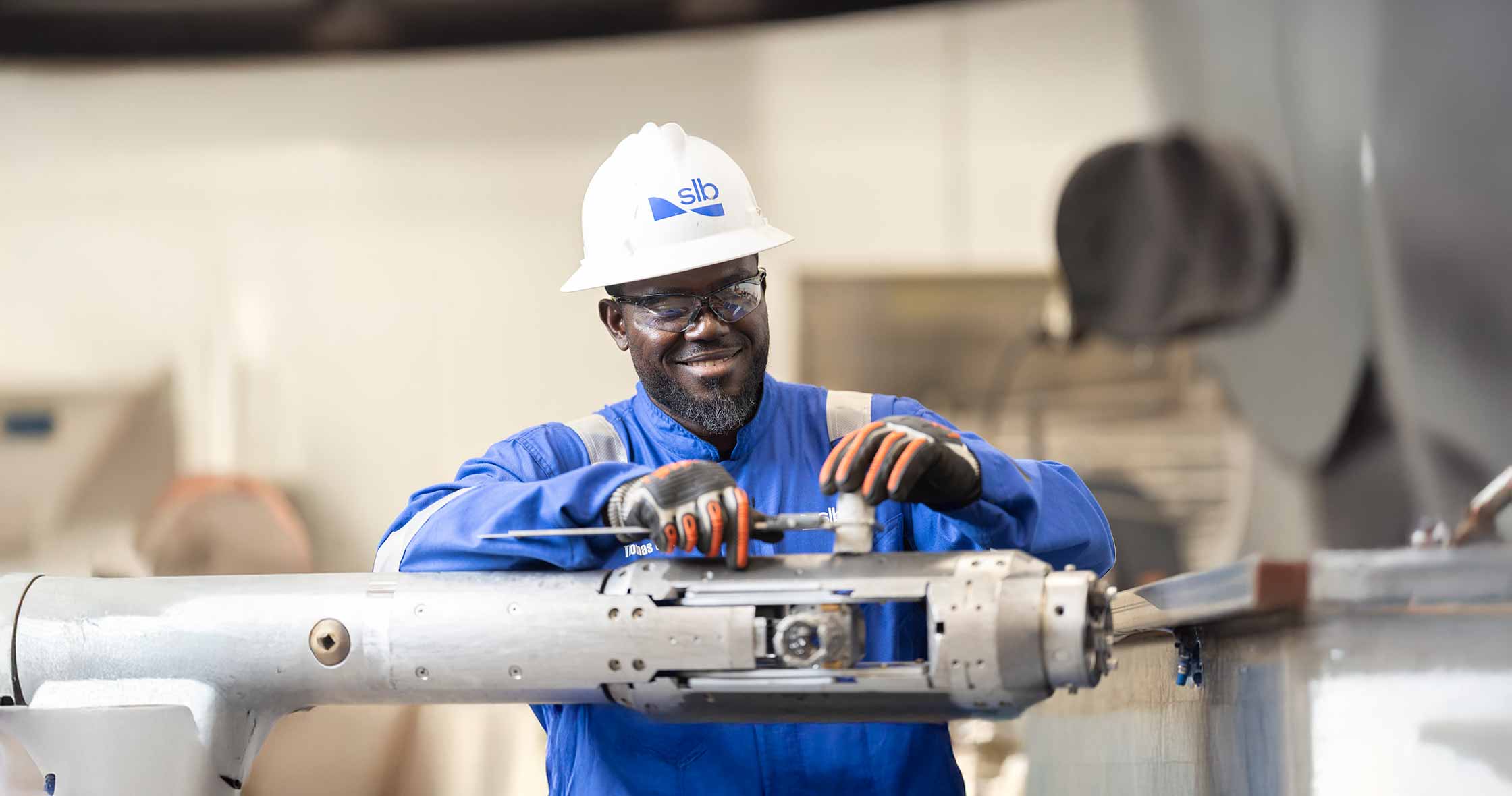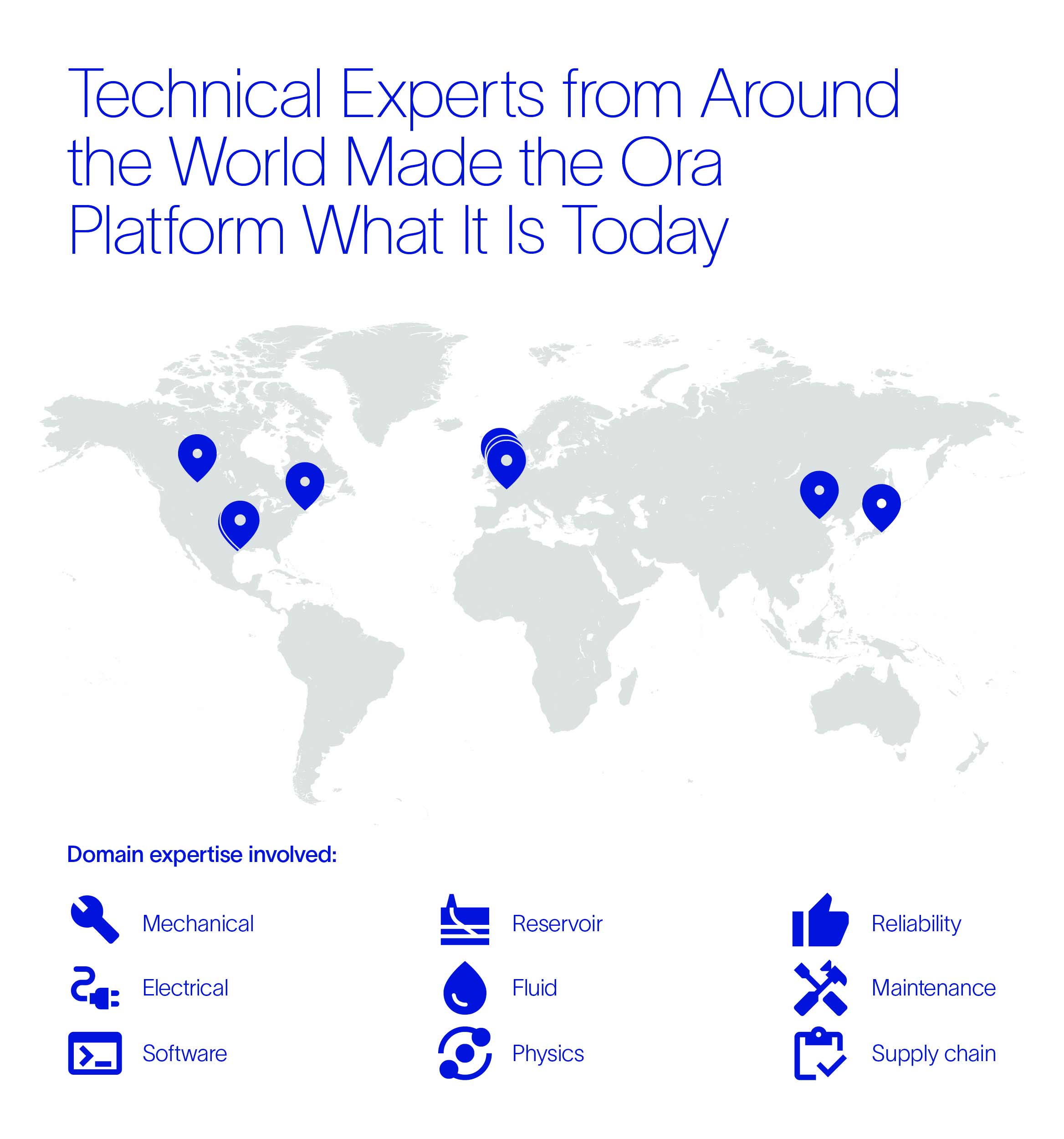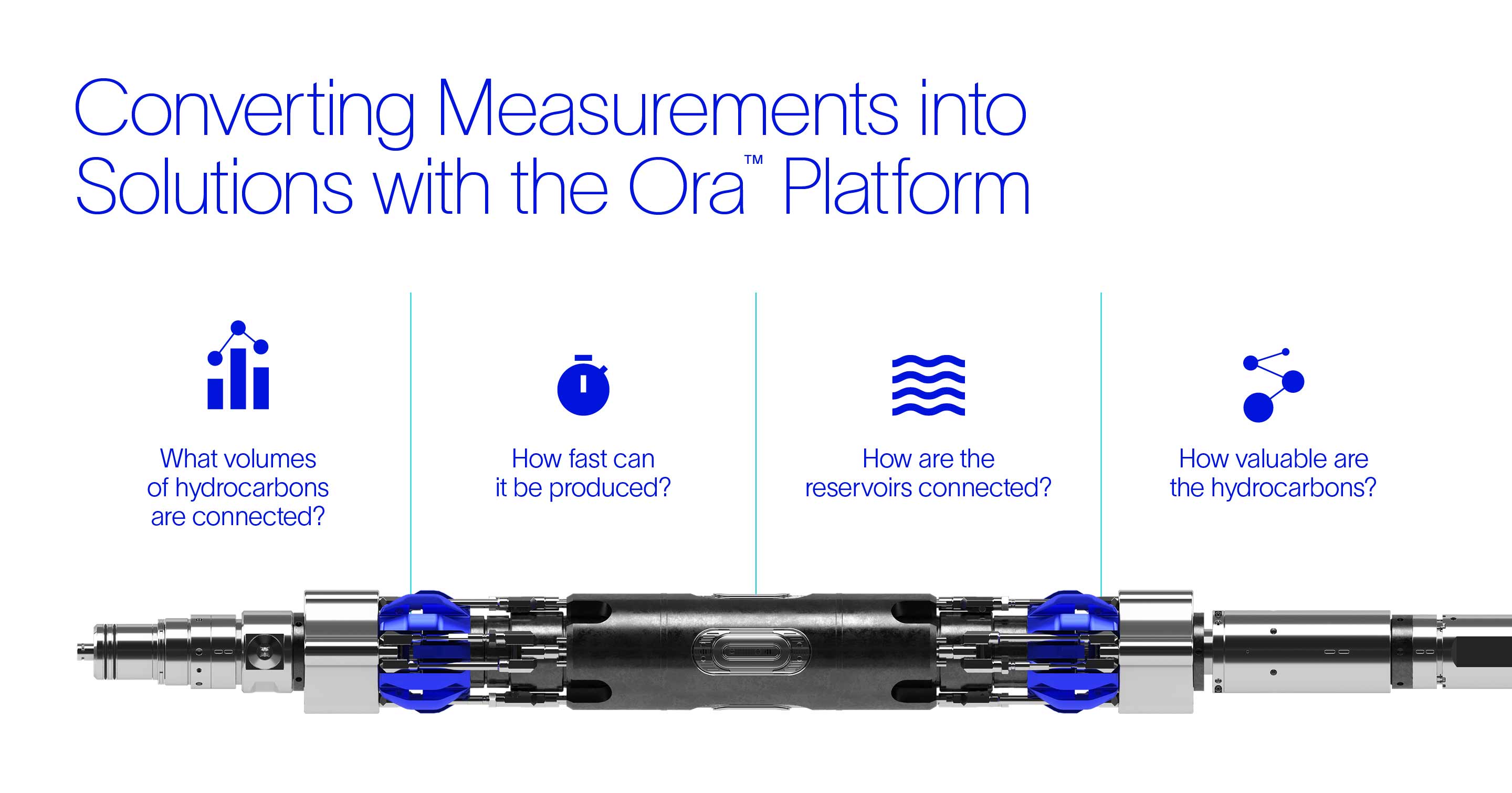
With how quickly our industry evolves, oil and gas operators need more than just data—they need integrated solutions that help them act, and fast. But what does it take to build such a solution? A group of SLB innovators envisioned developing a platform that finally delivered comprehensive reservoir characterization, even in the most demanding environments.
So, they set out to make their vision a reality through a project that brought together more than 500 individuals across 3 continents and multiple divisions.

Massive scopes ask for global efforts and expertise
Guiding the Ora™ intelligent wireline formation testing platform from concept to commercialization highlights what it takes to make a difference. For years, oil and gas operators had been dreaming of a tool that could characterize reservoirs in any subsurface context and not just provide the raw data but also integrate and assess it. To develop a multidimensional tool that can interpret the characteristics of any subsurface environment, however, you need technical experts that have dealt with every kind of subsurface environment.
Zero-flaring, intelligent formation testing
What if there was a platform that integrated hardware, planning, insights, and operational control—with downhole testing built in? This combination would not only help operators better estimate well deliverability (in any environment), but it would also drastically reduce their CO2 emissions to better align with today’s regulations. That’s what the Ora platform team—and we mean the whole team—set out to achieve.
What is deep transient testing?
Deep transient testing, also known as DTT, is the upgraded version of traditional downhole reservoir testing—just one of the innovative possibilities with Ora. It pumps faster for longer, which means more accuracy and a deeper (literally) understanding of the formation. It even performs in a high-pressure and high-temperature environment—something that was once thought to be impossible.
And the best part? Running on the Ora platform, it enables one of the fastest growing and most important initiatives for a low-carbon future: carbon capture and storage.
Identify and develop the missing link
Early field tests yielded challenging yet meaningful feedback. The measurement capabilities of the Ora platform were clearly impressive, but operators needed the tool to go a step further and connect those measurements. Only then could it generate valuable solutions that would improve efficiency, reduce risks, lower costs, and drop emissions.
The team realized there was a missing link between the hardware, planning, insights, and control—the exact piece they needed to make a leap forward in subsurface innovation. That missing piece came in the form of a digital container, or a digital infrastructure, that the Ora platform team developed to integrate all vital reservoir information and provide solutions that are directly consumable by the user.

A piece of global energy innovation
The demand for reducing emissions, decreasing risk, and fast-tracking production will only continue to grow. And the Ora platform is progressing the same way it started: with a presence all around the world. The deep transient testing within the Ora platform, for example, is generating solutions for a wide array of subsurface conditions across the global energy industry. Some operators are seeing their production startup times reduced to six months or less. Others are reducing their CO2e emissions by up to 96%, which is equivalent to taking nearly 1,200 cars off the road annually!
27 projects
involving the Ora platform, so farZero issues
when it comes to well control580 meters
as the deepest investigationBest tech
for exploration, says World Oil
